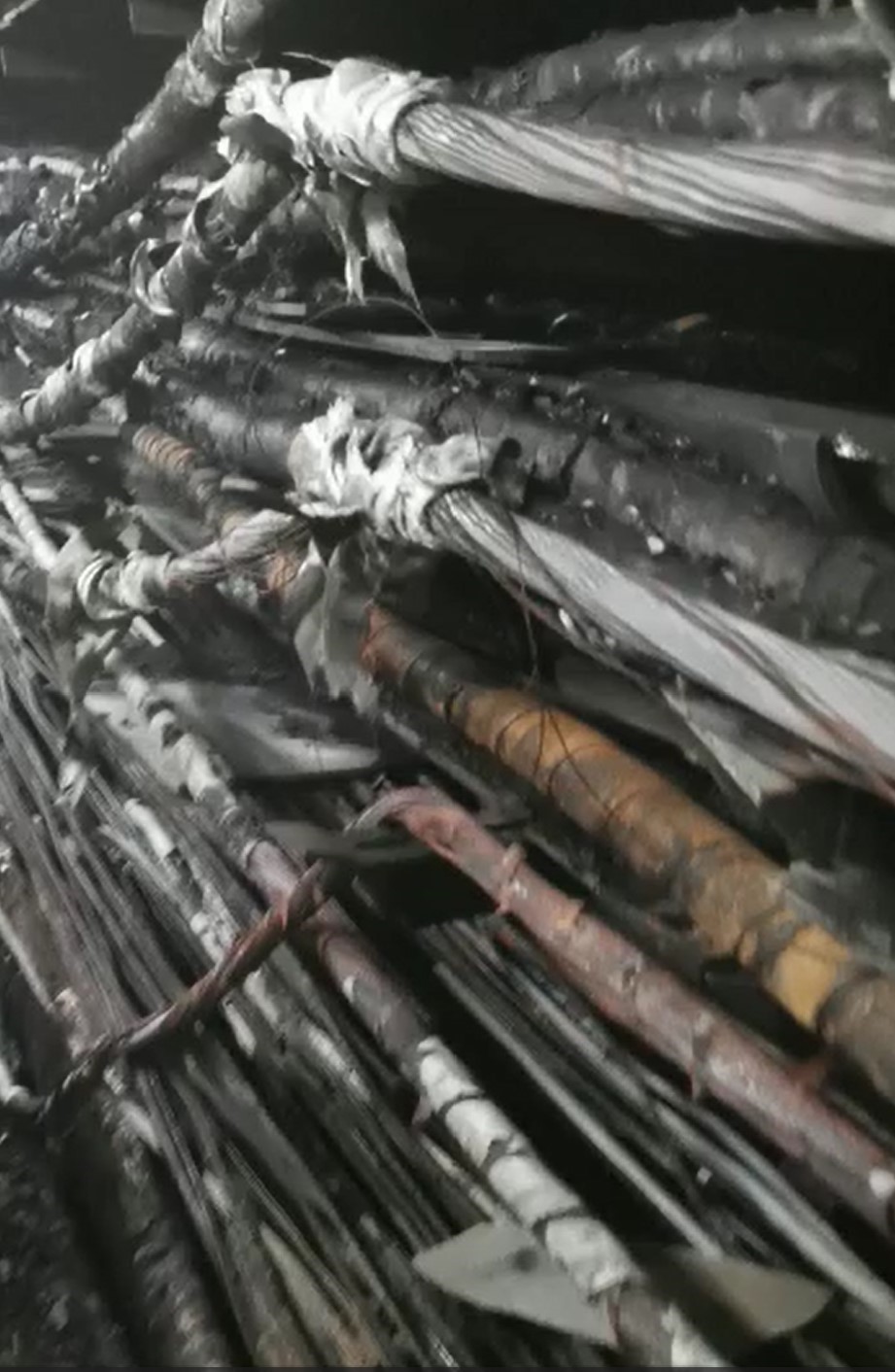
Cable collector
Do you hear the operator breathing strangely? As if it’s hard for him to breathe? That’s right! That’s because he’s wearing a gas mask. Otherwise, he may die, because he went down into the cable collector, where there was a great fire the day before. As you can see from this video, a lot of 6-35 kV power cables and various communication cables were burned in this collector. For a grid company, it’s like a natural disaster, and just hands down when you realize how much effort and money you need to spend on restoring the collector.
How can the risks of fires and their consequences be reduced? There are some rules.
1️⃣ It is a danger to lay many cables in one collector.
2️⃣ Cables should be separated by fire barriers.
3️⃣ Cables laid in the collector must have outer sheath that made of special materials resistant to the flame (taking into account the laying of a lot of cables in parallel).
4️⃣ If the cables do not have the specified outer sheath, then after laying in the collector, the cables outer sheath must be manually coated with special refractory compounds.
How else can the risks be reduced? In medium voltage networks of 6-35 kV, it is necessary to ensure the possibility of rapid selective disconnection of the cable in which insulation fault has occurred. To do this, as a rule, the network must have a neutral, grounded through a resistor with a resistance of no more than 50 Ohms (active component of fault current should be of value from 100 A up to 1000 A). With any other methods of grounding the neutral of the 6-35 kV network, there is a high probability that cable insulation fault will not be able to be quickly detected and selectively disconnected, which is why there is a multiple increase in fire risks.
Please do not believe those companies which will tell you that they will be able to make relay protection terminals that can selectively detect damaged cable with fault on it even if the 6-35 kV network has an isolated neutral or a neutral grounded through a Peterson coil. Don’t believe these companies, even if they are world leaders. It has been repeatedly proven that all these terminals are not ways to identify a damaged cable if insulation fault is of arc-type. Only metal-type faults could be detected by these terminals but not of arc-type. So, the proven conclusion is that only a low-resistance resistive grounding of the neutral would save the specified cable collector from fire.
The method of neutral grounding has a disastrously strong effect on the selection of cables and their behavior in operation!
